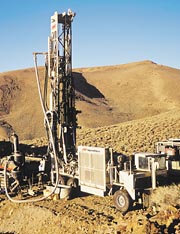
The size of a bit and hammer is determined by application and job specification. It is best to choose a size of hammer that is designed for the intended hole size. A good hammer-to-bit ratio will result in better energy transfer. Better energy transfer results in faster penetration rate and less stress to the drilling components — in other words, it results in better reliability and an overall lower cost-per-foot.
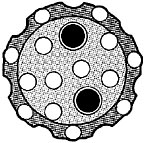
Body Style
The decision to select a particular bit design can be influenced by many factors, including the driller’s preference, ground conditions and application type.Flat Face – This simple configuration is ruggedly designed and is best suited for general purpose drilling. This design is extremely effective in highly broken ground as well as in both hard and softer formations. This durable head is not well suited for overburden or extremely soft formations, and it can lead to hole deviation problems.
Concave Face – The concave face bit generally is the most widely preferred bit. Its cone-shaped face has a stabilizing effect that results in straighter holes and less vibration of surface equipment. This bit is most effective in soft to medium hard rock formations. The staggered button placement produces very efficient formation breakage, which can result in slightly higher penetration rates.
Convex Face – This type of bit most often is used in hard rock formation, where the penetration rate is more important than the straightness of the hole. The dome face of the bit transfers more energy to a smaller area, which yields the higher penetration rate. That said, it is important to note that this bit drills a hole that may be less straight than other bit designs.
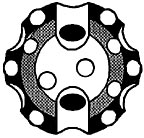
Carbide Type
Standard cutting carbide teeth are made of tungsten carbide. Particles are bound with cobalt alloy by applying high pressure and high temperature to compress the materials into the proper shape.In general, carbide becomes more brittle at higher harnesses, but a newer wear-resistant carbide type has been introduced to the drilling market. “This is a harder grade of carbide with the toughness of the standard carbide type,” says Chip Young, DHD product manager for Ingersoll-Rand. “Many drillers are now requesting this tougher carbide over the standard tungsten carbide.”
According to Young, polycrystalline diamond (PCD) buttons are composed of a synthetic diamond set into the tungsten carbide mix. PCD buttons are ultra-wear resistant as well as very expensive. Many deep hole drillers like the PCD buttons because they don’t have to worry about the bit wearing and changing it out. PCD buttons have been proven effective in soft to medium formations. These buttons are not suited for hard formations, and they usually are cost effective only in those applications in which bit changing costs are high when compared to bit cost.
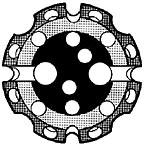
Carbide Shape
The button choice is the decision the most directly affects the penetration rate and bit life as well as indirectly affecting productivity and total drilling cost. Larger buttons increase toughness and wear resistance but decrease penetration rate. A harder grade carbide button increases wear resistance but decreases toughness. It is important to know that choosing buttons always will mean compromising.The button size is mostly determined by the bit size. Small buttons are chosen for higher penetration rate, especially if operators are running at low air pressures. Large buttons are chosen for longer life as well as for both improved toughness and wear resistance.
Spherical – The most common of button shapes, the spherical button is tough and is easy to re-sharpen.
Conical and Ballistic – The conical buttons are an elongated, round dome design, and the ballistics buttons are in the shape of a bullet. These buttons work well in soft rock applications to remove material as fast as possible, resulting in a higher penetration rate.
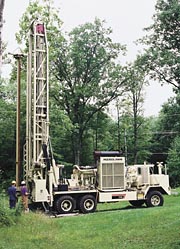
Preventive Maintenance
To prevent problems during drilling, be sure that all of the downhole drill assembly parts are clean and free of dirt. It is important to remove all nicks and burrs from these parts by polishing and removing corrosion deposits. All of the internal drill assembly components should be coated with rock drill oil, the o-rings should be checked and good thread lubricant should be used on the backhead and chuck threads.According to Young, as the carbide wears, less energy is being transferred from the drill to the rock. The bit rapidly can become less productive and more susceptible to breakage.
“It is important to keep those inserts sharp — sharpening means restoring the carbide to its original shape,” says Young. “When the flats become wider than 1⁄4-inch, it is a good time to sharpen them using a handheld or button grinder.”
Bit wear and total life will largely depend on the geology of the drilling site. In softer rock, bit life can be over 20,000 feet. In abrasive conditions, bit life can be only a few thousand feet and re-sharpening can be required as frequently as every 100 feet to 200 feet.
The most essential thing any driller should remember when choosing a bit is that it’s not just a piece of steel. Many factors are intricately involved in the bit decision, and none of the issues should be overlooked. Taking any of them for granted could mean loss of productivity – even downtime – if the bit breaks downhole. To remain productive and profitable, choosing the right bit is key.
Report Abusive Comment